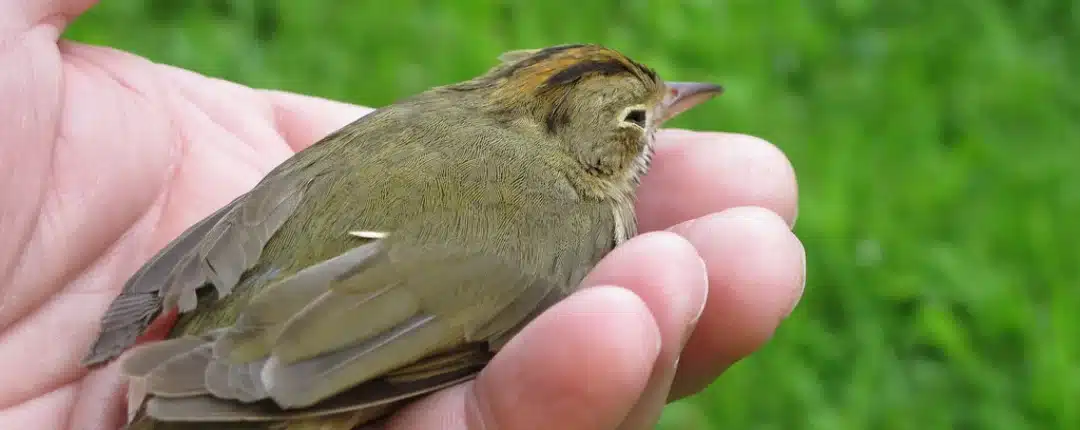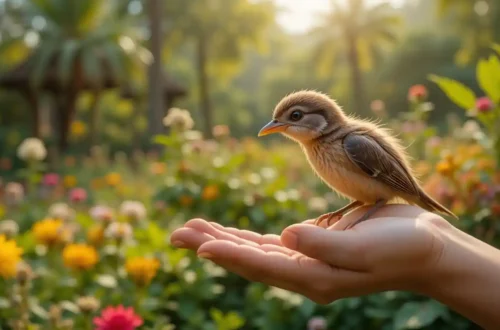Seeing a bird collide with a window can be startling and upsetting. While occasional light brushes occur, direct hits at high speeds often result in injury or death. Why window strikes happen, how to assess an affected bird, and steps to prevent future collisions will help many birds stay safe. Taking action to identify and modify dangerous windows also reduces replacement costs.
This article covers what to do when a bird hits a window in terms of both immediate first aid and long-term modifications. You’ll gain knowledge to mitigate risks to birds while keeping your views clear.
When Bird Hits Window The Curious Case
Birds hitting windows is a prevalent occurrence that often leaves us questioning why it happens. This behavior requires exploring the visual perception of birds and how it differ from ours. The reflections in windows can be misleading to birds, leading to unintended collisions.
The Impact on Avian Companions
The consequences of birds colliding with windows extend beyond the initial shock. These incidents can result in injuries ranging from mild to severe. Moreover, the cumulative effect of multiple collisions can have long-term implications for bird populations. It’s crucial to address this issue to protect our avian companions.
A Window’s Perspective
To comprehend why birds collide with windows, it’s essential to decipher their behaviour. Birds may perceive reflections as open spaces or territories to defend. This misunderstanding can lead to aggressive behaviour, with the bird attempting to establish dominance, ultimately resulting in a collision.
Strategies that Work
Preventing bird-window collisions requires a multifaceted approach. Implementing bird-friendly window solutions, such as decals or screens, can help birds recognize the presence of a barrier. Additionally, adjusting the lighting inside can reduce reflections, minimizing the chances of collisions.
The Environmental Impact of Bird Collisions
Beyond the individual bird, bird-window collisions contribute to environmental challenges. The loss of avian life disrupts ecosystems, affecting predator-prey relationships and the overall biodiversity of an area. Addressing this issue is an act of compassion and a responsibility towards maintaining ecological balance.
The Role of Architecture in Bird Safety
Architectural designs play a significant role in mitigating bird-window collisions. By incorporating elements like fritted glass or patterns that are visible to birds, architects can contribute to creating bird-friendly structures. This proactive approach ensures that the aesthetic appeal of buildings doesn’t compromise bird safety.
Bird-Friendly Landscaping: A Natural Solution
Landscaping around buildings can influence bird behavior. Planting vegetation that attracts birds away from windows and creating clear pathways for them can significantly reduce the likelihood of collisions. Bird-friendly landscaping is a sustainable and aesthetically pleasing way to coexist with our feathered friends.
The Importance of Public Awareness
Raising awareness about the issue of birds colliding with windows is crucial. Educating the public on the reasons behind these incidents and promoting simple preventive measures can lead to a collective effort to reduce bird fatalities. Every individual has a role to play in creating a safer environment for birds.
Technological Innovations for Bird Conservation
Advancements in technology provide innovative solutions to address the challenge of bird-window collisions. Smart windows equipped with sensors and AI can detect approaching birds, triggering changes in transparency or emitting signals that alert birds to the presence of a barrier. Embracing these technologies can revolutionize bird conservation efforts.
The Future of Bird Conservation: A Global Perspective
As we strive to create bird-friendly environments, it’s essential to consider the global impact of bird-window collisions. Collaborative efforts between nations, conservation organizations, and individuals can lead to the development of international guidelines for constructing bird-safe structures. The future holds promise for a world where birds and architecture harmoniously coexist.
Conclusion
Addressing the impact of When Bird Hits Window requires a holistic approach. Bird behavior, implementing bird-friendly solutions, and embracing technological innovations are key steps. By fostering public awareness and global collaboration, we can create environments where birds and architecture harmoniously coexist. This proactive stance not only protects avian companions but also ensures a sustainable future, mitigating the risks of bird-window collisions worldwide.







